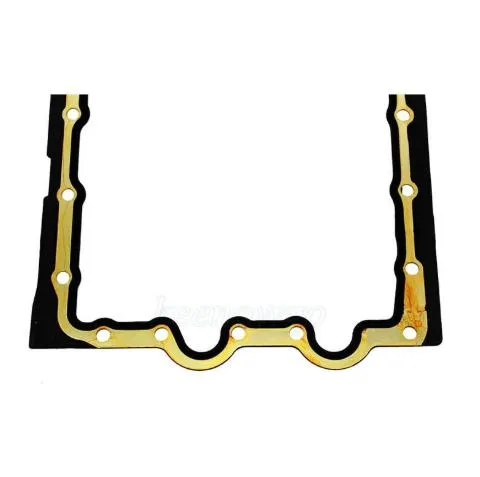Oil System Maintenance: Preventing Leaks and Ensuring Engine Health
Your engine’s oil system plays a vital role in lubrication, cooling, and overall performance. One often-overlooked area in oil system maintenance is the integrity of gaskets and seals around the oil filter, oil housing, and oil pan. A small leak today can lead to major engine damage tomorrow. This article explores the oil filter stand gasket, oil housing gasket leak, oil housing seal, oil pan housing gasket, and walks through replacing oil filter housing and its gasket.

What Is the Oil Filter Stand Gasket?
The oil filter stand gasket is a rubber or composite seal that sits between the oil filter stand (or adapter) and the engine block. The stand mounts the oil filter and routes oil through the filter before it returns to the engine.
This gasket must endure high temperatures and pressure over time. When it begins to fail, oil may start leaking from the filter base area.
Common Symptoms of a Faulty Oil Filter Stand Gasket:
Oil seeping around the filter or adapter base
Gradual oil loss with no visible damage to the filter itself
A drop in oil pressure or visible oil warning light
Replacing this gasket often requires removing the filter stand and carefully cleaning the mating surfaces. It’s a small part, but critical to maintaining oil integrity.
Identifying and Addressing Oil Housing Gasket Leaks
The oil housing gasket is another frequent source of leaks. This gasket sits between the oil filter housing and the engine block. The oil housing holds more than just the filter—it may contain oil sensors, oil coolers, and various passages.
When this gasket begins to fail, you’ll likely notice an oil housing gasket leak:
Symptoms of a Leak:
Oil collecting on the front or side of the engine block
Burnt oil smell from oil dripping onto hot surfaces
Frequent need to top off engine oil
In most cases, the leak begins slowly and gets worse over time. Delaying repair increases the risk of low oil pressure and engine wear.
Closely related to this gasket is the oil housing seal, which may refer to a smaller O-ring or rubber gasket used where components inside the housing connect. This includes connections to the oil cooler, temperature sensors, or pressure valves. A failed seal here can cause internal or external oil leaks.
Oil Pan Housing Gasket: A Leak from Below
While many focus on oil filters and housings, the oil pan housing gasket is another critical component that often causes leaks. This gasket seals the oil pan (the reservoir at the bottom of the engine) to the engine block.
A worn oil pan gasket can lead to:
Oil dripping underneath the vehicle after parking
Persistent low oil levels
Visible residue on the oil pan’s edge
Replacing the oil pan gasket typically requires removing the pan itself—a task best done during an oil change or if the vehicle is already lifted for other maintenance.
It’s important to use a torque wrench when reinstalling the pan to avoid warping and ensure even pressure across the gasket.
Replacing the Oil Filter Housing and Gasket
Sometimes, replacing the gasket alone isn’t enough—especially if the housing is cracked or warped. Replacing the oil filter housing may be necessary in cases where:
Plastic housings have cracked due to heat cycling
The threads for the oil filter are stripped
The internal oil cooler is damaged or leaking
In such cases, you’ll need to replace the oil filter housing gasket along with the entire unit. This job typically involves:
Draining the oil and possibly the coolant (if the housing connects to the cooler)
Removing intake manifold or hoses for access
Cleaning all mating surfaces thoroughly
Installing the new gasket and housing with the correct torque
It’s essential to use the correct gasket—many housings come with molded rubber seals or composite gaskets that are engine-specific. After installation, always check for leaks and top off fluids before starting the engine.
Final Thoughts: A Leak-Free Oil System is a Healthy Engine
Whether it’s the oil filter stand gasket, a subtle oil housing gasket leak, or a worn oil pan housing gasket, each seal plays a critical role in the proper functioning of your oil system. Regular inspections and timely replacements can save you from unexpected engine trouble.
Quick Tips for Leak Prevention:
Always use high-quality or OEM gaskets
Replace gaskets during major services (e.g., oil pan removal or filter housing service)
Torque bolts to manufacturer specifications
Clean all surfaces thoroughly before installing new gaskets
Inspect for leaks after every oil change
Proactively maintaining your oil system’s gaskets and seals isn’t just about avoiding stains in the driveway—it’s about preserving your engine’s longevity and performance.
-
Seal 12x20x5: Precision Radial Shaft Seals for Industrial Reliability
Nouvelles Nov.24,2025
-
Seal 12x18x5: Essential Guide to Specifications, Applications & Vendors
Nouvelles Nov.24,2025
-
Understanding Seal 12 20 5: Applications, Specifications & Industry Insights
Nouvelles Nov.23,2025
-
Durable Oil Seal 85x110x12 – Reliable Sealing Solutions for Industry
Nouvelles Nov.23,2025
-
Durable and Precise Oil Seal 75x95x10 for Efficient Machinery | YJM Seal
Nouvelles Nov.22,2025
-
Durable Oil Seal 75x100x10 for Reliable Industrial Performance | YJM Seal
Nouvelles Nov.22,2025
-
High-Quality Oil Seal 65x90x10 | Durable & Reliable Sealing Solutions
Nouvelles Nov.22,2025
Catégories de produits















